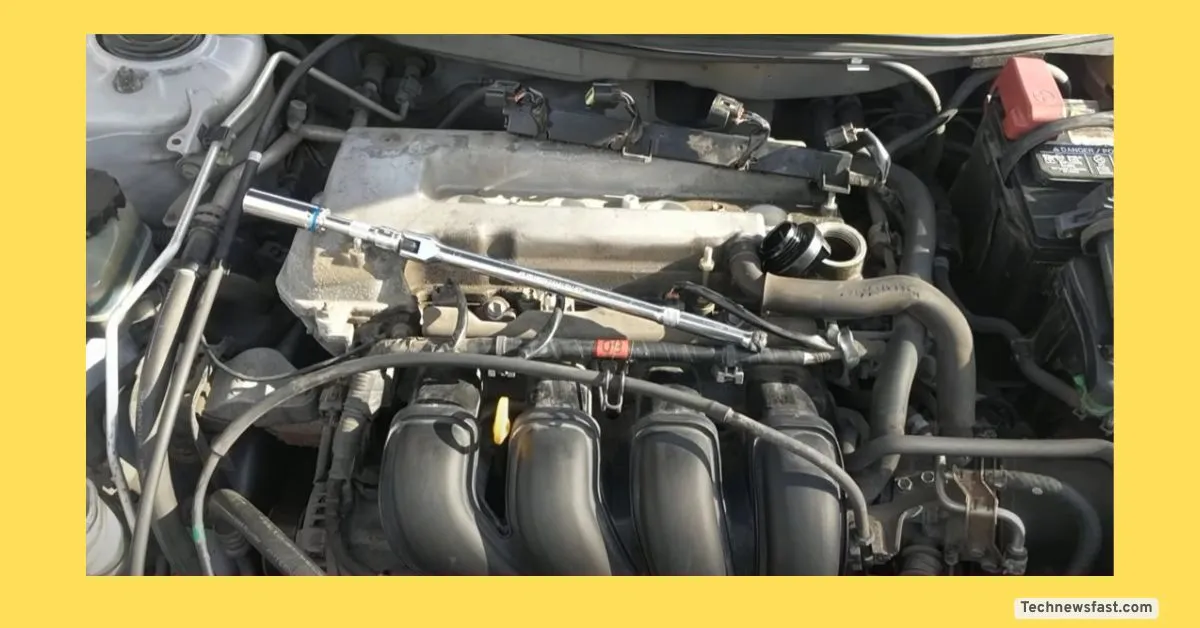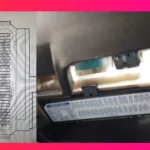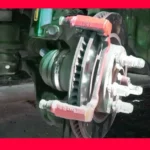Welcome to a guide that not only explains how to clean spark plugs without removing them but also shares the easiest, most effective method for keeping your car or bike running smoothly. Most car owners don’t realize how much a simple spark plug cleaning can improve performance. Clogged or dirty spark plugs drag down mileage and hit your pocket. But with the right hacks, you can restore your engine’s pickup and smoothness—all from the comfort of your home.
In this detailed post, we’ll walk step-by-step through the full cleaning process, using tools and products you probably already have around the house. Whether you want the best spark plug cleaner, tips on cleaning with petrol or WD-40, or are looking for a way to manage without a wire brush or a fancy cleaning kit, you’ll find everything here.
Why Spark Plug Cleaning is Important
A dirty spark plug means more than just a rough idle. It can shrink your car’s mileage, cut into power, and cost you money on fuel and repairs. The root cause? Carbon and grime build up on the spark plug tip. If the gap between the tip and electrode changes due to dirt, your engine burns extra fuel and struggles for power.
Regular spark plug cleaning can:
- Improve your car’s fuel efficiency and reduce fuel costs
- Restore engine pick-up and smooth running
- Save money on buying new plugs or visiting the mechanic
It’s a common myth that you should only clean spark plugs when the car goes in for service. You don’t have to wait six months or a year. If you notice your engine misfiring, mileage slipping, or starting issues, it’s time to act. A quick cleaning at home can solve these problems fast.
What You Need to Clean Spark Plugs at Home
You don’t need a professional spark plug cleaning kit or expensive tools to refresh your plugs. Here’s a list of simple items:
- White Vinegar (safed sirka): Found in any grocery store for about ₹50, one small bottle will clean 10-12 plugs.
- A Small Container: Choose a glass cup or a cut plastic bottle. The container should be just deep enough to fully soak the metal tip of the spark plug, but not so large that you waste vinegar. Transparent containers are ideal so you can see the dirt floating off.
- A Brush: If you have a small wire brush or even an old toothbrush, that’s perfect for scrubbing after soaking. But don’t worry—read on if you want to know how to clean a spark plug without a wire brush.
- Optional Tools: Feeler gauge for gap measurement, WD-40 or petrol for thread cleaning.
Step-by-Step Guide: Clean Spark Plug Easily at Home
The following process will get your spark plugs clean, whether they are from a bike or a car. You’ll see, this is the method for those who want the best spark plug cleaner without fancy machines.
1. Remove the Spark Plug (or Prepare to Clean in Place)
If you’re cautious and want a deep clean, take the spark plug out of the engine using a spark plug wrench. If you want to know how to clean spark plugs without removing them, spray white vinegar or a spark plug cleaner spray directly onto the plug and let it soak for a while before gently wiping off the grime. However, for a truly deep clean, removing the plug works best.
- For cars with 3-4 plugs, take out all plugs for batch cleaning.
2. Soak in White Vinegar
- Pour enough white vinegar into your container to submerge just the metal tip and thread of the plug.
- Drop the plug in tip-first.
- Leave it to soak for at least 2 hours. This gives the vinegar time to dissolve stubborn carbon buildup.
3. Inspect and Scrub (if Needed)
After soaking:
- You’ll see black carbon deposits floating off and settling around the plug.
- Much of the carbon will lift away on its own.
- For any sticky residue, use a brush (a toothbrush will do for soft scrubbing).
- If you don’t have a wire brush, you can still get good results. The vinegar softens the dirt so much that gentle rubbing or even wiping with a rag will remove nearly everything.
4. Dry and Check
- Rinse off the plug with clean water or a dash of petrol for extra cleaning power. For those asking how to clean spark plugs with petrol, just dip a cloth in petrol and wipe down the threads and tip.
- Let the plug air-dry completely before reinstalling.
Pro Tip: Don’t use high pressure or harsh metal tools that can damage the electrode tip. Gentle cleaning is key.
How to Check and Adjust Spark Plug Gap
Cleaning is only half the story. Over time, the spark plug gap can widen or narrow, leading to poor sparks or misfires. Checking and correcting the gap should be part of every spark plug cleaning session.
Why Spark Plug Gap Matters
If the gap is too small or too large, your plug may not spark at all, or it could misfire under load. This directly hurts your vehicle’s performance.
Measuring the Gap
- Use a feeler gauge (available at most auto shops).
- For most passenger cars, the ideal gap is between 0.8 mm and 1.2 mm.
Steps to Check Gap
- Slide the 0.8 mm feeler gauge between the electrodes. It should fit snugly, not loosely.
- Try the 1.2 mm gauge. It should not fit. If it does, your gap is too wide.
- For precise measurement, if you don’t have the exact feeler gauge, combine 0.6 mm and 0.58 mm gauges to make 1.18 mm. This is slightly less than 1.2 mm and works as a check.
Adjusting the Gap
- Gently tap the ground electrode to close the gap, or use a gap tool to widen it.
- Don’t force the tip; bending with too much pressure may break the electrode.
Visual Guide: A gap measurement chart or image helps here. It’s a key part of the process, so if you’re writing for a blog, add an infographic showing the correct method.
Reinstalling the Spark Plug Correctly
Once your plug looks clean and has the perfect gap, it’s ready to go back in.
Cleaning the Threads
- Before fitting, check the engine socket or the plug threads for remaining carbon buildup.
- Clean with a shot of WD-40 or a little petrol, and wipe with a rag.
Fitting Tips
- Always hand-tighten before using a wrench to avoid cross-threading.
- Ensure a snug fit, but don’t overtighten, as this can strip threads or crack the insulator.
Enjoy the Results
After reinstalling, you should notice:
- Smoother engine sound
- Faster pick-up and throttle response
- Improved mileage and lower fuel costs
Tip Box:
- Don’t clean or fit spark plugs with the battery connected. Always work with a cool engine.
- Use eye protection if spraying WD-40 or petrol.
Expert Tips and Precautions for Cleaning Spark Plugs
- Don’t knock or drop spark plugs—the ceramic or tip can break easily.
- Use only feeler gauges for gap measurement. Guesswork can hurt performance.
- Clean only when needed. Over-cleaning wears plugs and shortens their life.
- Always test drive after cleaning to observe improvements.
If you’re using a spark plug cleaner spray, apply only to the metal area, avoiding the insulator for best safety.
Spark Plug Cleaner Products: What Works Best?
Many readers ask about the best spark plug cleaner. While white vinegar is a top homemade option for basic cleaning, some prefer specialized sprays or even electronic cleaners. Here are a few options:
- Spark plug cleaner spray: Great for on-the-go, quick carbon removal.
- WD-40: Handy for breaking up tough deposits and lubricating threads.
- Spark plug cleaning kit: Includes brushes and feels professional but isn’t necessary for light household cleaning.
- Petrol/diesel: Old-school but effective, especially for sticky oil grime.
If you’re wondering how to clean spark plugs with WD-40, spray a little on the dirty area, let it soak for a minute, then brush or wipe clean.
Why Choose This DIY Method Over Others?
With so many cleaning gadgets on the market, it’s easy to overcomplicate things. This method uses household items, costs almost nothing, and delivers results as good as most commercial spark plug cleaner spray products. No fancy equipment needed—no wire brush, no compressed air.
Conclusion
Keeping your spark plugs clean is one of the simplest, most effective ways to boost your car’s or bike’s performance. This home method, using white vinegar, petrol, or WD-40, proves you don’t need a fancy spark plug cleaner for great results. Try this method today, enjoy better mileage, smoother starting, and a quieter engine—your vehicle and your wallet will thank you.
Read also.







